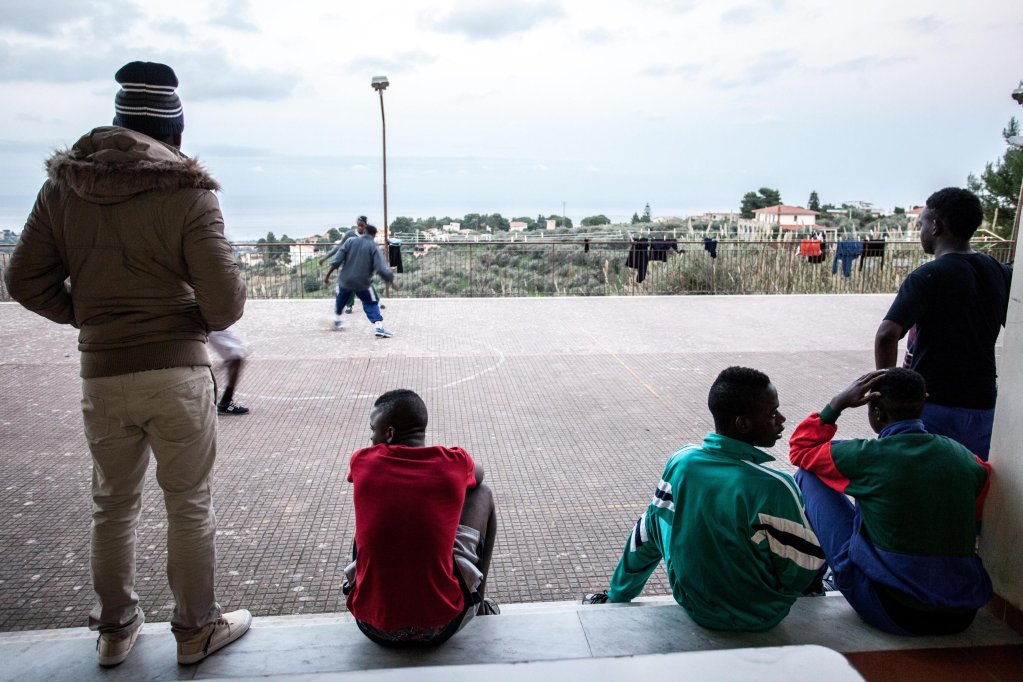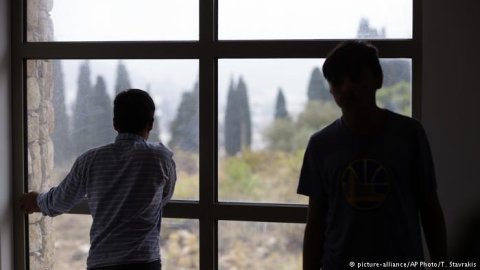‘Thousands of kilometers alone’: Unaccompanied child migrants arrivin
Source: InfoMigrants: reliable and verified news for migrants – InfoMigrants
In 2022, unaccompanied minors across the EU accounted for 19% of the total number of first-time asylum applicants. Juvenile migrants coming to Europe from countries in West Africa and the Horn of Africa are mostly boys, aged 16 to 17 and traveling alone.
Applications for international protection for the period May 2022 to April 2023 have been approaching levels that resemble 2015-2016 figures, the period that saw a peak in migration triggered primarily by the war in Syria, reported the European Agency for Asylum recently.
The migration of unaccompanied minors is also increasing. In 2022, unaccompanied minors accounted for 19% of the total number of first time-asylum applicants under the age of 18 across the European Union (EU).
However, EuroStat noted that the increase is related to more asylum applications being lodged in general, rather than a disproportionate arrival of unaccompanied minors.
‘In search of safety’
Many of the unaccompanied child migrants arriving in Europe actually set off from home, or are forced to flee, when they are even younger than they are when they eventually arrive in Europe. Many spend years on the road prior to their arrival and might spend periods internally displaced in their regions before eventually joining a migration route toward the EU.
This is particularly true for those coming from Africa. According to the UN Refugee Agency UNHCR, around 40% of the world’s displaced are children. The largest single group of them are hosted in Ethiopia, around 41,000 stated UNHCR in 2022.
“Many of these unaccompanied and separated children have to live with the trauma of having seen things that no child ever should,” stated UNHCR in a report. “Some have even seen their parents killed.”
Those forced to flee may have trodden “thousands of kilometers alone in search of safety,” states UNHCR.

Hopeless about the future
According to a study by the United Nations Children’s Fund (UNICEF), a feeling of hopelessness about the future and having no safe and legal alternatives for migration available to them push minors “to take matters into their own hands.” The desperation that underpins their migration decisions puts them at an even higher risk of exploitation, abuse, and other forms of violence during and after their journey.
UNICEF estimated that more than one child dies every day along the perilous Central Mediterranean route from North Africa to Italy.
The study also revealed that children traveling from the Middle East to Greece via the eastern Mediterranean route come primarily from just three countries: Syria (54%), Iraq (27%), and Afghanistan (13%). In fact, Afghan children also make up the majority of the unaccompanied children arriving in Europe, reported Eurostat at the beginning of 2023.
In comparison, those coming to Europe from countries in West Africa and the Horn of Africa are in the vast majority boys, aged 16 to 17 and traveling alone. Figures from the Italian government show that more than 7,000 unaccompanied minors have arrived in Italy since the beginning of 2023. In 2022, figures for the whole year show that more than 14,000 unaccompanied migrant children arrived on Italy’s shores, and in 2021, more than 10,000. If the numbers arriving this year stay on course, there will be a slight increase based on last year’s arrival figures for the 12-month period.
In West Africa, migrants transit through Morocco and Algeria to reach Spain, both via the Mediterranean Sea to mainland Spain and by land to the Spanish enclaves of Ceuta and Melilla in Northern Africa, as well as across the Atlantic towards the Canary Islands archipelago, part of Spain.

Horn of Africa: Gripped by Drought and Conflict
The Horn of Africa Region comprising Djibouti, Eritrea, Ethiopia, and Somalia, has been devastated by the worst drought in 40 years. The unrelenting drought brought by an unprecedented five consecutive dry seasons has caused chronic hunger and water insecurity, affecting an estimated 20 million people, according to the UN.
According to the World Weather Attribution Initiative, an organization of international scientists who analyze extreme weather events, the devastating drought is due primarily to human causes of the climate crisis.
Many juvenile migrants initially move to other neighboring African countries in search of livelihood opportunities or to escape conflict. Europe is a far-off destination to both their minds and their feet when they first carve out a migration path but, according to UNICEF, the abuse they experience along the way pushes them on towards Europe. The recent conflict in Sudan, where many of the region’s young first migrate, has also pushed more onwards to seek safety and opportunities in North Africa and Europe.
Omar’s tale
Seventeen-year-old Omar* moved to Sudan from Eritrea after his brother was killed. According to a report by the international NGO Save the Children, in Sudan, Omar was undocumented, out of school, and unable to find work to get by. When he heard about a group planning to enlist the help of a smuggler to go to Libya, he joined them, unaware of the risks.
Once they reached Libya, Omar and his companions were passed on to traffickers who reportedly held them for ransom and tortured them. Omar managed to escape and eventually reached Tunisia, a common departure point for migrants to enter Europe via the Central Mediterranean Route.
Read more: Migrant children especially vulnerable on Central Med Route
The Save the Children report also highlighted how juveniles migrating on the Central Mediterranean Route from sub-Saharan Africa employ various coping mechanisms to try and protect themselves throughout their journey.
Juvenile migrant girls expect to be raped on the journey and start taking contraceptive pills before they start their journey. “Girl victims consider the risk of raping as normal… a sort of price to pay,” a social worker in Tunisia told Save the Children.
Trade not aid
Experts from the Germany-based thinktank Geopolitical Intelligence Services (GIS) say that factors pushing migration outside of Africa to Europe will remain and likely intensify over the next decades because population growth is outpacing economic growth and livelihood opportunities. By 2050, an estimated more than half of Africa’s population will be under 25 years old.
Other factors such as political instability, chronic violence, and the sustained impacts of the climate crisis are intersectional factors that will contribute to migration out of Africa.
GIS pointed to expanding development assistance to Africa beyond aid and said,
“For decades, the approach to Africa’s economic challenges from Europe – both that of the EU and that of individual member states – has focused more on aid than trade. Aid, however, does not itself deliver (and may hinder) economic transformation processes. A growing consensus… is that trade may be a decisive factor.”
*(not his real name)
If you are an unaccompanied minor and recognized as such, EU countries should offer you accommodation, education and support. Here is some information for minors in Germany. Here for Spain. This is for Greece. This is for France. And this is for Italy.
The original article: belongs to InfoMigrants: reliable and verified news for migrants – InfoMigrants .




